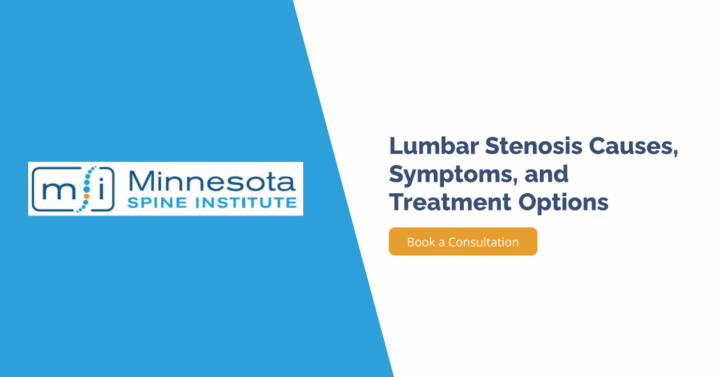What Is Lumbar Stenosis?
Lumbar Stenosis, also known as Lumbar Spinal Stenosis, is a medical condition where the spaces in the spine begin to partially narrow, resulting in additional pressure on the spinal cord. There are two places in the back where stenosis is most likely to occur: the neck, which is cervical stenosis and is not to be confused with lumbar stenosis, which occurs in the lower back. It is important to note that the presence of lumbar stenosis does not always result in pain. Other than pain, people may experience a tingling sensation, numbness, general muscle weakness, and difficulty with normal bladder and bowel functions. However, there are also people who do not show any signs or symptoms at all.
The causes of Lumbar Stenosis are many. A herniated disc can become cracked and leak some of the mucoprotein gel inside the disc that cushions the spinal cord, or the presence of a tumor created from inside the spinal cord can put additional pressure on the spine. Other possible causes are the overgrowth of bone and an injury to the spine.
Best Treatments
The specific treatment recommended by your doctor will depend on the severity of the pain and how lumbar stenosis is affecting your normal lifestyle. The best treatments are minimally invasive and are performed on an outpatient basis by a surgeon. In most cases, you will be up and on your feet in less than 2 hours.
Pain Medications
Some patients who experience pain will get some type of medication for pain management. The type of medication ranges from over-the-counter NSAIDs such as Advil and Aleve, to muscle relaxers, and opioids such as OxyContin.
Epidural Nerve Block
A procedure that involves steroid injections intended to reduce inflammation, also known as epidural nerve blocking, is the second non-surgical option. Injections are made at the site of the pain and are done on an outpatient basis. The procedure takes less than 30 minutes but there is an additional one hour required for observation. The limitation of this treatment is the injections are limited to 3 in a 6 month period, so chronic pain will likely require surgery. Despite the limitations, the reported success rate for patents is very high.
SCS
Advances in medical technology have developed what is called SCS or Spinal Cord Stimulation. It is a surgical procedure that places an electronic implant in your spinal cord. The implant sends electronic impulses through your spinal cord, resulting in a decrease in pain as the impulses interrupt the pain signals sent to the brain. There are two steps used to determine whether SCS is the best option for your situation.
After consulting with your doctor, a temporary SCS device will be placed on your back. This is a relatively short procedure lasting between 30 and 45 minutes, with a brief time for recovery observation. Follow-up visits will determine the amount of time the temporary SCS device remains in place, or if the procedure is the best possible option. Once the trial phase is completed, a second implant procedure will be scheduled, lasting about two hours.
For patients who are approved for the permanent SCS implant, there is a reported 50 to 70 percent reduction in pain from 80 to 90 percent of all patients who undergo the treatment.
MILD
MILD is a trademarked procedure that is FDA-approved and has been successfully performed safely on thousands of patients. The method behind the procedure is to remove the pieces of ligament and small bones that are causing the pain by creating a tiny incision in your lower back. Doing this restores the space that was lost with the lumbar stenosis. The advantages of MILD are that no stitches are required, nor is there any general anesthetic required. After an imaging scan is completed on your lower back, you will be out of the doctor’s office in less than 1 hour.
However, while this is great news for many lumbar stenosis sufferers, the procedure is limited to patients who have light to medium symptoms. Severe cases may require open surgery procedures such as a laminectomy, laminotomy, or laminoplasty. MILD can be attempted and if the results do not improve the pain, open surgery can still be performed, if necessary.
Summary
These are the best treatments for lumbar stenosis based on the following criteria:
- They are performed on an outpatient basis
- They are minimally invasive or non-invasive
- They are available to most lumbar stenosis sufferers

